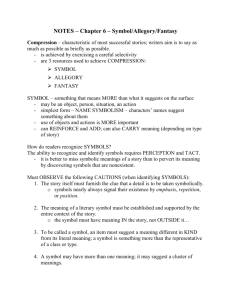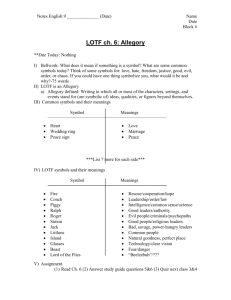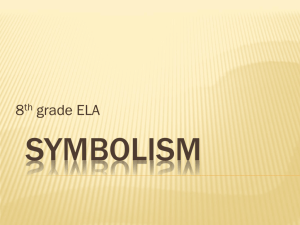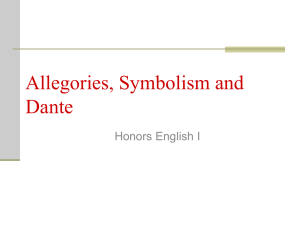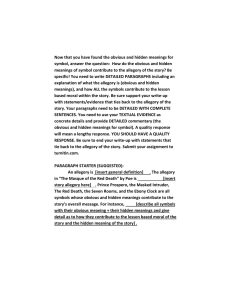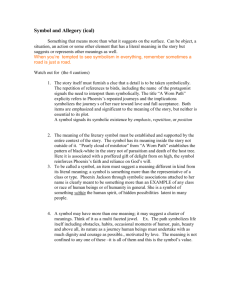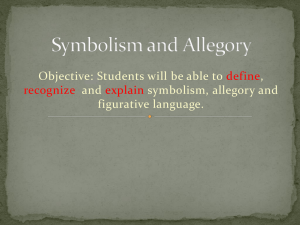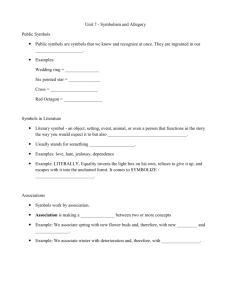ALLEGORY: An extended story which carries a deeper meaning
advertisement
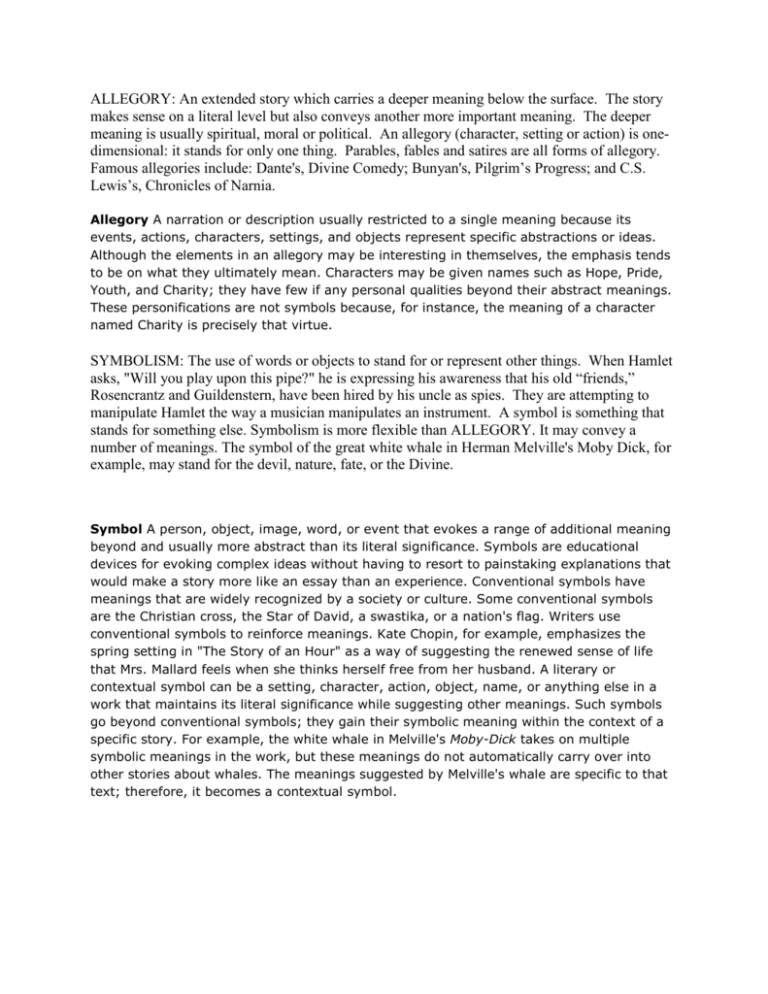
ALLEGORY: An extended story which carries a deeper meaning below the surface. The story makes sense on a literal level but also conveys another more important meaning. The deeper meaning is usually spiritual, moral or political. An allegory (character, setting or action) is onedimensional: it stands for only one thing. Parables, fables and satires are all forms of allegory. Famous allegories include: Dante's, Divine Comedy; Bunyan's, Pilgrim’s Progress; and C.S. Lewis’s, Chronicles of Narnia. Allegory A narration or description usually restricted to a single meaning because its events, actions, characters, settings, and objects represent specific abstractions or ideas. Although the elements in an allegory may be interesting in themselves, the emphasis tends to be on what they ultimately mean. Characters may be given names such as Hope, Pride, Youth, and Charity; they have few if any personal qualities beyond their abstract meanings. These personifications are not symbols because, for instance, the meaning of a character named Charity is precisely that virtue. SYMBOLISM: The use of words or objects to stand for or represent other things. When Hamlet asks, "Will you play upon this pipe?" he is expressing his awareness that his old “friends,” Rosencrantz and Guildenstern, have been hired by his uncle as spies. They are attempting to manipulate Hamlet the way a musician manipulates an instrument. A symbol is something that stands for something else. Symbolism is more flexible than ALLEGORY. It may convey a number of meanings. The symbol of the great white whale in Herman Melville's Moby Dick, for example, may stand for the devil, nature, fate, or the Divine. Symbol A person, object, image, word, or event that evokes a range of additional meaning beyond and usually more abstract than its literal significance. Symbols are educational devices for evoking complex ideas without having to resort to painstaking explanations that would make a story more like an essay than an experience. Conventional symbols have meanings that are widely recognized by a society or culture. Some conventional symbols are the Christian cross, the Star of David, a swastika, or a nation's flag. Writers use conventional symbols to reinforce meanings. Kate Chopin, for example, emphasizes the spring setting in "The Story of an Hour" as a way of suggesting the renewed sense of life that Mrs. Mallard feels when she thinks herself free from her husband. A literary or contextual symbol can be a setting, character, action, object, name, or anything else in a work that maintains its literal significance while suggesting other meanings. Such symbols go beyond conventional symbols; they gain their symbolic meaning within the context of a specific story. For example, the white whale in Melville's Moby-Dick takes on multiple symbolic meanings in the work, but these meanings do not automatically carry over into other stories about whales. The meanings suggested by Melville's whale are specific to that text; therefore, it becomes a contextual symbol.
